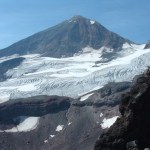tanzania
The emergence of "new" diseases is a complicated issue. "New" diseases often just means "new to biomedical science." Viruses like Ebola and HIV were certainly circulating in Africa in animal reservoirs for decades, and probably millenia, before they came to the attention of physicians via human infections. Hantavirus in the American southwest has likely infected many people, causing pneumonia of unknown origin, before the Four Corners outbreak led to the eventual identification of the Sin Nombre virus. Encroachment of humans into new areas can bring them into contact with novel infectious…
Dr. Wangari Maathai died on Sunday at 71, of ovarian cancer. It is interesting to me that so many of the obituaries get her work wrong - consider what the New York Times says:
Dr. Maathai, one of the most widely respected women on the continent, wore many hats -- environmentalist, feminist, politician, professor, rabble-rouser, human rights advocate and head of the Green Belt Movement, which she founded in 1977. Its mission was to plant trees across Kenya to fight erosion and to create firewood for fuel and jobs for women.
It is a small error, but an important one. Maathai did not wear many…
We'll try again with a finding a good Mystery Volcano Photo!
The last MVP was Mt. Meru in Tanzania, submitted by Michael Dalton-Smith. Now, I thought this image was going to be a little harder than it turned out to be as the shot of Meru on Wikipedia is a very similar shot, but that happens sometimes - and it did take 9 guesses this time! Congrats to MK in Alberta for getting that MVP. As for Meru, the last known eruption from this African volcano was in 1910, a VEI 2 explosive event from the aptly named "Ash Cone". Meru appears to have been relatively active during the late 1800's and early…
Leave your infrared-laser tripped stationary camera to your dad, the whitetail hunting enthusiast, 'cause you're about learn what REAL wildlife photography is.
Will & Matt Burrard-Lucas just wrapped up their first (largely) successful photography expedition using their ingenious BeetleCam, a remote control camera ATV. The brothers have been professional nature photographers since 2004 but really set themselves apart from the wildlife photography hive when they strapped their DSLR camera to four tiny all-terrain tires, and camouflaged it.
After poppin' some major wheelies in the airport…
A comparison of three-dimensional scans of hominin footprints. Top) A footprint made by an experimental subject using a normal, "extended" gait. Middle) A footprint made by an experimental subject using a "bent-knee, bent-hip" gait. Bottom) A Laetoli footprints. From Raichlen et al., 2010.
About 3.6 million years ago, at a spot now in Laetoli, Tanzania, a pair of hominins trudged through the ashfall dumped onto the landscape by a nearby volcano. We don't know for certain what they looked like (it is generally believed that they were Australopithecus afarensis from the presence of fossils…
The flu has retreated and I'm getting back on track. Huzzah!
I'll get back to the blog by posting this week's new USGS / Smithsonian Institution Global Volcanism Program Weekly Volcano Report. Looks like some interesting stuff in it ...
Looks like there were some small eruptions from Oldoinyo Lengai in Tanzania. The volcano is one of the few (only active?) carbonatite volcanoes in the world, erupting a lava composed primarily of calcium carbonate and sodium minerals with very little silica. It leads to the odd lava that erupt black (and cool ~ 500C) and cool to white, making it one of the…
Oldonyo L'engai, Tanzania
As with most disasters, the best way to prevent a Katrina-like catastrophe is preparedness. The best successes in volcanic mitigation have been in places where the combination of monitoring, communications and practice fit together like so many legos in a set, allowing for a calm and orderly evacuation when the eruption, or signs of eruption, began (e.g., Rabaul in 1994). This is why it is always heartening to me to see articles about places trying to implement hazard mitigation plans for their volcanoes. Two examples are in the news today:
(1) Officials in…
When people think about volcanic mitigation, a lot of time is spent worrying about monitoring and science. There is nothing wrong with this as we need to know what the volcano has done in the past and what it is doing now to predict its future activity. However, a very important piece of the mitigation puzzle is education, because without educating the public of the dangers of the volcano, many times they will not listen to officials when time for evacuation comes (see Nevado del Ruiz, Colombia in 1985). That is why this report from Tanzania is great: scientists going out and educating the…
Scientists have discovered two new species of animal recently, one in Tanzania and the other in Nepal. Though the researchers had spotted the giant, cat-sized shrew (Rhynchocyon udzungwensis) as far back as 2005 in Tanzania, they have now identified it as a new kind of giant sengi.
The findings were published in the Feb. 4 issue of the Journal of Zoology.
Meanwhile, in the wetlands of southern Nepal, scientists captured a new kind of warbler. It is a sub-species that seems to be the "missing link" between two other species of warbler...blah, blah, blah. Let's get back to the massive…
In 1978, a paleoanthropological team including Mary Leakey, Richard Hay, and Tim White made a startling discovery at Laetoli, Tanzania; in a bed of volcanic ash that would later be dated to about 3.5 million years old were the footprints of ancient hominids. The preserved trackway, found to contain the footprints of three individuals of the same species walking in the same direction during a very short period of time (possibly walking together as a group), would become one of the most important and iconic of hominid fossils, the fact that hominids were walking upright 3.5 million years ago…

